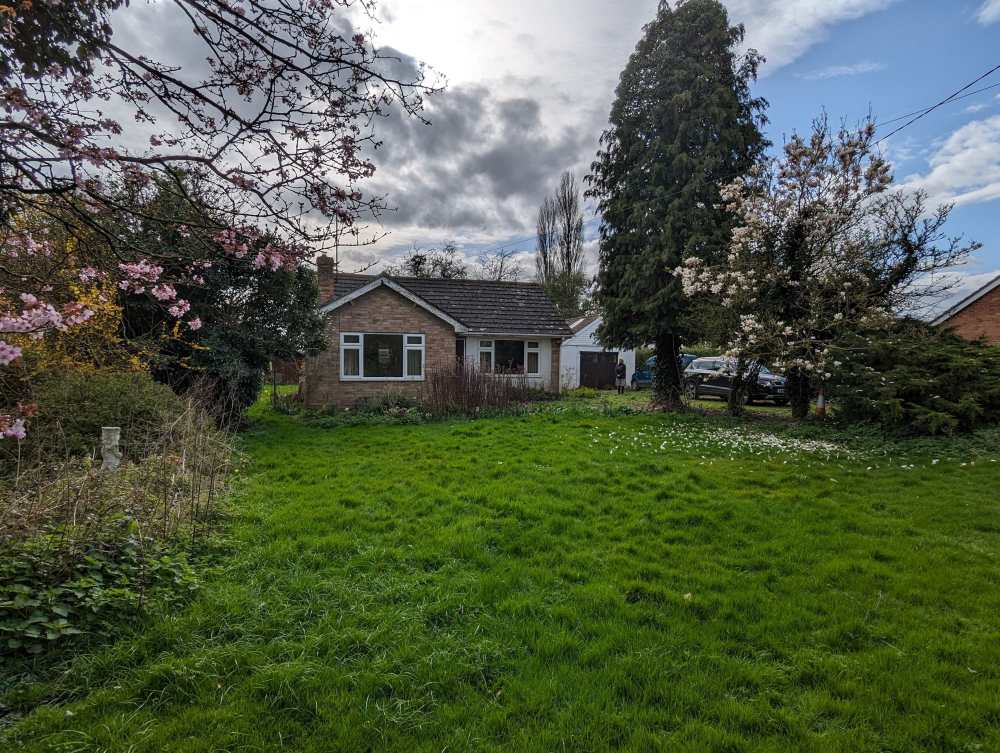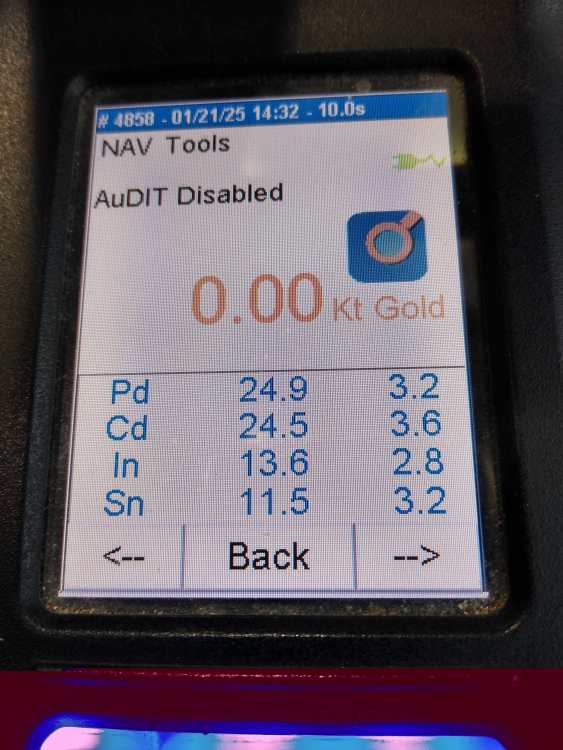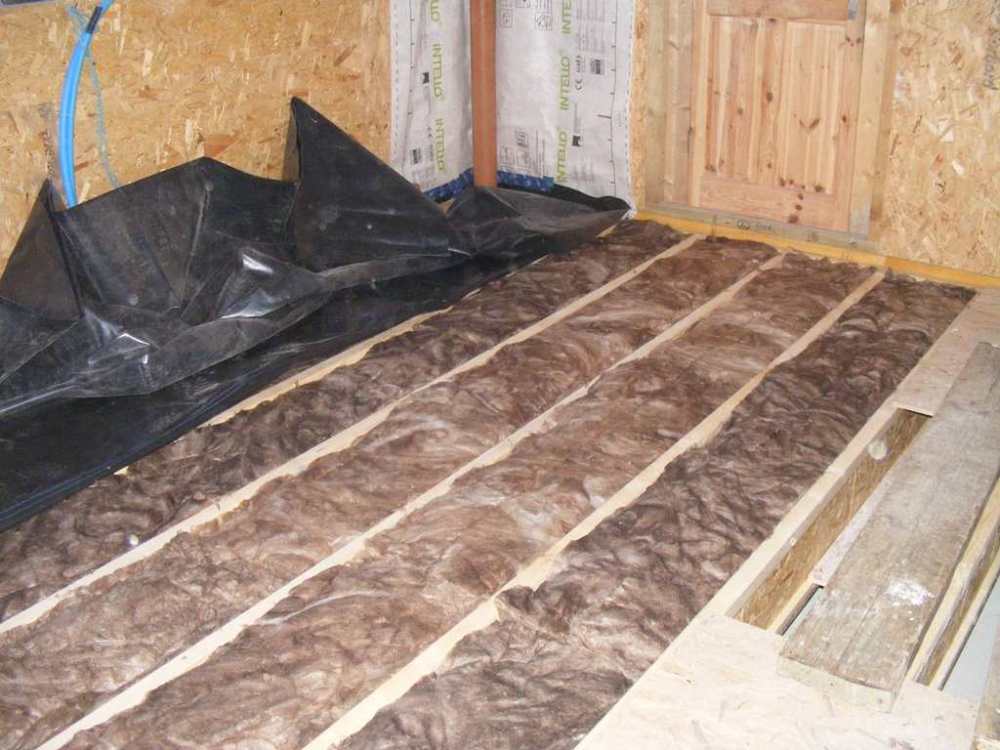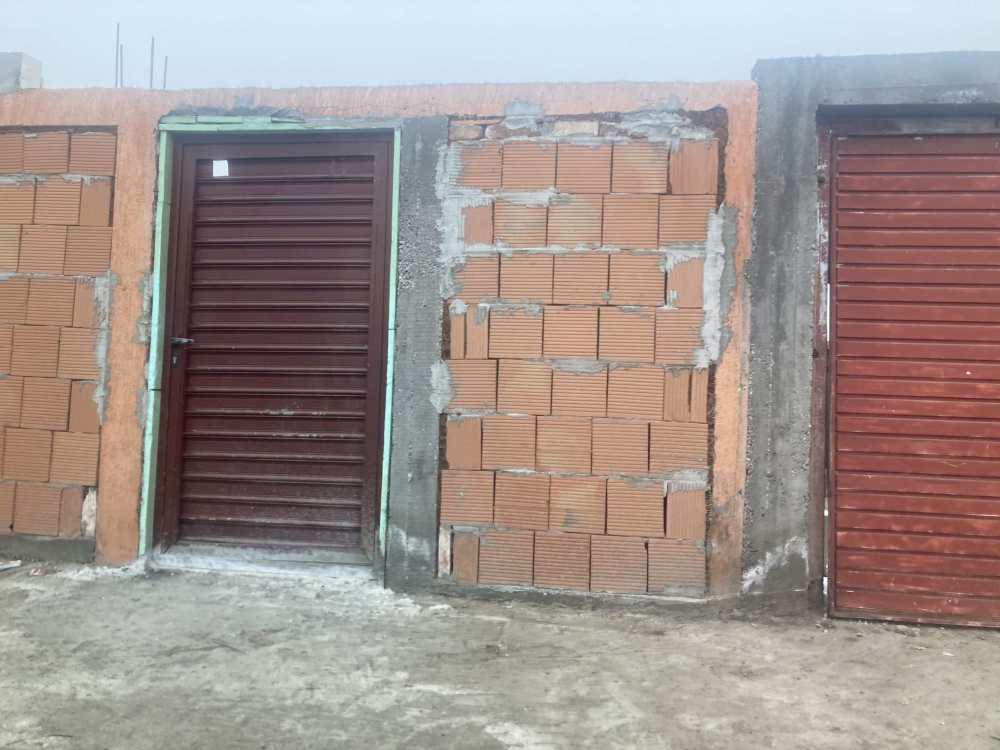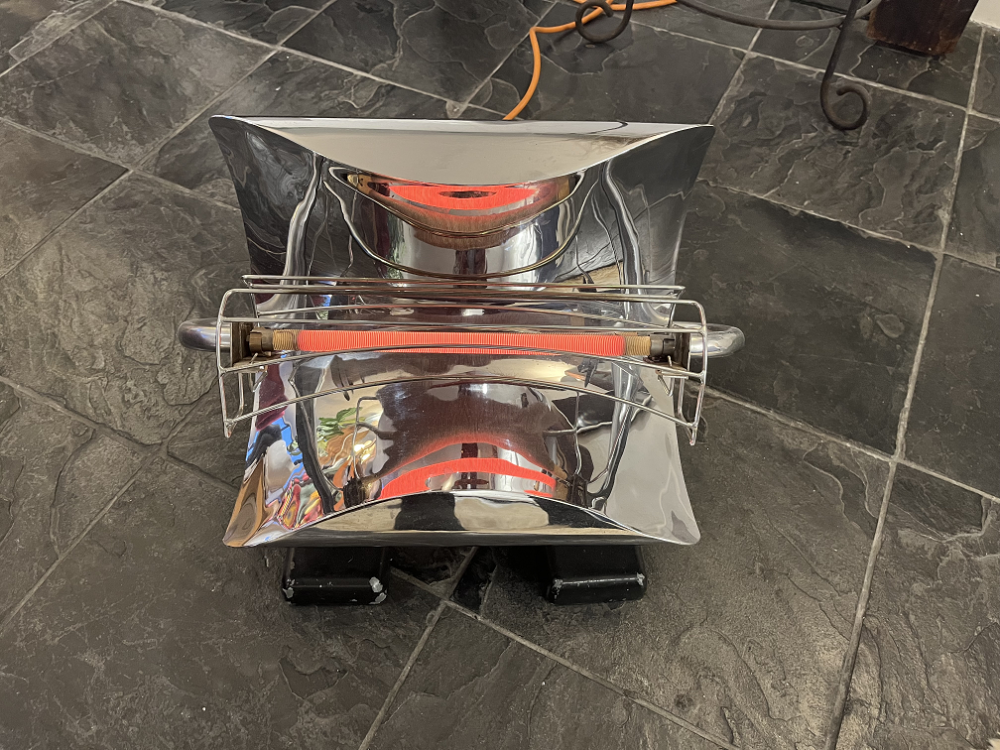Leaderboard
Popular Content
Showing content with the highest reputation on 01/21/25 in all areas
-
2 points
-
2 points
-
Defo costly at a glance, but when you factor in the unit costs, simplicity of install, near zero maintenance, huge longevity, almost immediate heat effect to occupants, they make sense overall. The only kick in the nuts here is the installation ‘engineer’ who first did all this didn’t do the maths, hence there is now a cost to ‘put it right’, then it’ll be a good setup eg fit for purpose.2 points
-
In the interest of discussion I'm going to disagree UK has always lagged behind other countries - The mandating of condensing boilers was done without also mandating how to ensure they condense for all of their operating time - for many replacements they were left on virtually the same settings as the previous non condensing boilers - huge opportunity missed IMO Had I been informed that lowering flow temps would have gained me 7 % efficiency gain the rad changes I have made in the last 3 years would have been done 13 years ago As a result we also missed on getting houses ready for ASHP with lower flow temps which is why you state that ASHP with 55 - 60 deg flow temps and a cop of 3.5 to 4.0 would result in far more conversions but those flow temps and COP is not possible with the current ASHP hardware. I upgraded all my T11 rads to T22 of the same overall dimensions - in terms of output at same temp that's 1.4 times bigger (@T50) - you don't even notice they are bigger - That enabled me to go from a ~60 deg flow to a ~30 deg flow - I am on 22mm circuit with 15mm from circuit to rad but even microbore would would flow enough l/min to ensure the rads were warm enough to heat the house Total spend on rad upgrades was far less than the cost of a boiler change On this point I agree but I don't trust the government to run a bath let alone set a framework for reducing the use of FF2 points
-
Have planning permission for a basement and 2 floor rear extension1 point
-
Good idea. I'll report back... That's possible. As above, it's nominally set to 40°C, but the dial on an an immersion stat isn't a precision instrument and the only temperature gauge is the one on the manifold (the one reading 38°C), so I've no way of knowing how close the Willis is to 40°C in reality. It will be getting a set of sensors & a Pi control system once the rest of the refurb is done - in time for next winter, I hope!1 point
-
1 point
-
Most window-taping I have done has been onto the inner face of the window (by less than the depth of the plaster or plasterboard) and thence onto the masonry. It was done after the windows were fitted.1 point
-
1 point
-
Can you find the k-value of the materials the blocks are made from? Failing that, what thickness are the blocks, then it is possible to calculate the thermal resistance of the wall build up. I am not 100% sure, maybe @Gus Potter can clarify, but I think the N number is the compression strength (number of newtons) and different block types may behave differently when drilling and screwing into them.1 point
-
Doesn’t look lime based, not light enough. as @nod said, 4-1 sand and cement will be ideal for granite1 point
-
For a couple of jobs I have specced Weber LAC and mesh onto cement type boards, sponge finished then painted. 6mm thick. It has stood the test of time. Thin coat beads. Material costs are about £12/m2.1 point
-
This thread has just reminded me that I bought a Secoh full service kit, for the old EL series pump, about six years ago. The part number is K-EL-60/80/100/120W/150W/200W. It moved house with me and it's been sitting around in the house for too long. It it's of any use to anyone I'll send it to them if they donate a tenner to Buildhub. Just let me know.1 point
-
We have been living in our Danwood for six months now. Our design but adjusted for their construction methods. Very pleased - it's such a change to come home to a warm house where every room is comfortable, well almost. Just had their heating engineers out today to solve a poorly heated bedroom. This had been reported through their online reporting system and engineers were out within the week. They found the thermostat connections to the underfloor valves were mixed up and we were thus adjusting one bedroom and actually setting another. Still they were efficient and pleasant, soon fixed it and all going well. This is something we were pleased about with Danwood, very professional. Be aware though with the foundation requirement. They did spring a need to add our own additional floor insulation on us at the last moment. What they specified in December 2023 did not quite meet regulations which they claimed had recently changed (well actually June 2022 chaps...). We consequently did an insulated raft on medium shrinkage clay but with trees some distance away. No problem with BC - foundations were inspected then we provided photographs. The whole thing was done in 8 weeks. I think BC recognised that this was a factory assembled building made to a high standard. Fully designed out with full superstructure calcs by UK engineers. The construction is a well oiled machine and they didn't skimp as far as I could see (which was every evening after they'd left!). Be prepared for lots of left over timber, we still have a stack under cover for all those small jobs coming up in the garden.1 point
-
Over 4 degrees and it's ok. If there is cement in the product then it is a chemical reaction, not drying, so this neds to be for at least a day, including early morning frost snaps.1 point
-
No it's not Stones field but a lot of these bungalows are very similar. No time to lose!1 point
-
Yup, agreed, as long as the cable runs aren’t vulnerable to mechanical damage. May still need an RCD at source if so. It’s down to being there and giving it the old ‘electricians eye’ lol. 😜1 point
-
1 point
-
So you put in for planning before purchasing the plot? And had the build contract ready to sign! Good going. What would happen if PP refused?1 point
-
Good point, I'd misread that as an RCBO. Yes if it's an RCD it will need a 100A overcurrent protective device in series though I think that could be upstream or downstream. To be fair if the individual circuits are on RCBO and are the only thing in the CU then you could (and perhaps should for selectivity) just swap the 100A RCD for an MCB which would also solve that issue.1 point
-
It's at 0.7m and reports 2W & 0.1m³/hr. But just below 0.2m³/hr, so somewhere in the 100 - 200 litres/hr range as it only displays to one decimal place. The latest generation (launched 2018/2019?) did improve the efficiency, so that will one reason the power is low. As it's UFCH there are plenty of smooth bends, but hardly any elbows or tees to hamper the flow and, being an apartment, no second floor to pump to.1 point
-
This could cause a problem for the building fabric. Sometimes a group of hot sweaty teenagers dancing, other times the yoga group not breathing properly, then there will be the village shindig with spilt beer, and worse of all the WI, who will never let on what they get up to. Could cause a lot of condensation problems.1 point
-
It's the latest generation of the Wilo Yonos Pico (type 25/1-4), running in UFCH (constant differential pressure) mode. It will go right down to 1W; there's a digital display that shows the power consumption & flow volume.1 point
-
SIG group used to sell them, and they have 3 sites in Scotland (not incl. Edinburgh, I am afraid). A search for 'SIG, EPS beads' finds nothing, but it's worth calling them. Good luck.1 point
-
Looks like standard Spanish construction. The renderer sorts it.1 point
-
Try Greenwood Unity CV2SVGIP Low Voltage dMEV Fan I have 3 and rate them highly. Re dehumidifiers, yes, plug-in. Do you have the little boxes filled with absorbent crystals? They are OK for keeping a cupboard fresh (if you remember to change them - note to self!!) but won't do much in a big space.1 point
-
nice! i lived in Epsom and Ewell most of my life before i had to head south to get more for my money. we have a basement. built it using RC waterproof concrete with an external waterproof membrane and surrounded by and sat on 200mm EPS. I put it up on a blog here if you're interested.1 point
-
Think coat render we do lots of TF buildings that way Sticks like sh## to a shovel1 point
-
1 point
-
There are systems where a netting is applied first, with screw fixings, then the render sticks to the board enough, with the additional support of the mesh. Very expensive but it works and I would not advise any other way. Or apply sods law and spill paint or render on it accidentally, as we know that doesn't come off.1 point
-
@nod are you sure about this? All my soffits/undercloaking is cement board. It has been up for 2 years, paint seems okay. I’m pretty sure I just followed M.I. on how to paint; use SBR primer. Of course this use case is completely different to what the original post is asking. https://www.sts-board.com/wp-content/uploads/2024/05/STS-Construction-Board-Product-Leaflet_2024.pdf @Adam2 did you go ahead with painted cement board as you suggested in this thread?1 point
-
Meanwell for example do relatively cheap, 6kW inrush limiters, 2 module wide and DIN rail mounting but only 16A. Mix and matching these with whatever RCBOs are in the cu could cause you incompatibility issues and indeed invalidate insurances as going against MIs. That is even if there is space in the cu. They don't do a 20A unit but a 28A but I think that is 3 modules wide. A bfo, separately enclosed, upfront current limiter serving all the RCBOs is an option but if that fails ever you potentially lose power to all RCBOs and thus heaters. I'm thinking if this is the route taken, then an enclosure with a current limiter per heater feeding an enclosure with just the heater RCBOs. That gets over the different makes in one cu issue. Unless you can get inrush limiters the same make as the RCBOs. A conundrum for sure which is why the sparks is perhaps taking his time. Put it to him maybe. Should be cheaper than a whole new board.1 point
-
"earth fault loop impedance" is the technical term for "wire impedance" - e.g. (in very simplified terms) the resistance of the loop of cable from the live on the generator at the power station to the end of the circuit and back through the earth to the generator. This resistance/impedance determines the amount of current that can flow through a dead short from live to earth. The Earth Fault Loop Impedance is therefore one of the factors governing the size of the protective device : as you say it has to be low enough that a dead short will allow enough current to flow that the breaker will trip within the required disconnection time for the type of circuit. Hence as you have correctly understood, the electrician is saying he needs to measure the earth fault loop impedance at the far end of each circuit before he can confirm that it's appropriate to change the overcurrent protective device (as the limit for a 20A breaker is lower than that for a 16A breaker, and indeed the limit for a type C is lower than for a type B). This does sound like it is due to the cold resistance (and therefore inrush current) of the circuit. If there is a single heater per circuit then there's not a lot you can do other than change the type/rating of the protective device or put an inrush limiter in front of the heater. The ratings of the protective devices do not of themselves necessarily equal the maximum demand of the installation. BS7671 does not provide any mandatory method for calculating maximum demand : it is up to the designer to use their expertise to make a reasonable assessment. If you have 6 x 3kW heaters on fixed wiring with no other appliances connected (and no sockets in the circuits) then your maximum demand is 18kW = 78 Amps at UK nominal voltage (between 71-83 amps on a supply within the voltage tolerance range). This is without applying any diversity, which probably wouldn't be appropriate in this situation. Changing the protective devices doesn't in any way change the maximum demand of the heaters. Therefore, it's entirely reasonable to size the protective device for the demand, current carrying capacity and loop impedance of each individual circuit. It is not automatically a problem to have breakers adding up to 120A downstream of an overall 100A breaker. Of course, you may find that if you make each individual breaker big enough to carry the inrush current, you move the problem upstream and end up with the combined inrush now tripping the 100A protective device. This however could be managed by adding control gear to switch one or two heaters slightly on after the others. 2.5mm² T&E is rated for 23A in conduit/trunking on a wall surface, 27A clipped direct to the surface. If the cable is buried / passes through or under insulation at any point, or is bunched with others / at a nonstandard ambient temperature this will reduce those ratings. So from that perspective a 20A RCBO would likely be fine for the current carrying capacity of the cable.1 point
-
That's interesting, I've never seen temperatures even close to that after 6 hours of running... Out of interest, what size is your UFH system? Mine is 824 meters of pipe (no idea how many litres that equates too). I've 5 circuits totalling 273m of pipe, 16mm diameter. If that has a wall thickness of 2mm that would be a capacity of about 31 litres, so call it 40 litres with the manifold, heaters & associated pipes. Pumping at between 100 & 200 litres / hour and assuming the manifold thermostat does no blending, that would circulate the water through the whole system every 12 to 24 minutes. The pump only tells me in 100 litre chunks, so not sure exactly where it is on that scale. On the same basis your system would have a capacity around 102 (93+9) litres, or 2.6 x the capacity of mine. So, at the same pump setting as mine, it would take between 30 and 60-ish minutes for one complete circulation. I've seen various figures suggested as optimum in the 5 - 10°C range. I don't have any calculations to justify my current setting - it just seemed like a good starting point to adjust the flow so the heater was running near the maximum I set it to (nominally 40°C) without it hitting the limit and switching itself off.1 point
-
1 point
-
You don’t pay for building control till all the planning and materials are agreed We paid around £850 for a full house and workshop I think LA have a standard price for there services1 point
-
You don’t really need a roller, but probably a primer then 3mm latex screed then glue them down. Why would you need a soft hammer for glue down ? I used the Ardex 175 adhesive on my upstairs landing and bathroom as that was what the flooring supplier had. It worked well1 point
-
Where does the internal noise come from in split systems? I know there were some systems that had the compressor inside and all that was outside was the heat exchanger and fan. But do modern ones do that? I thought they kept all the gubbins outside and all that was inside was a plate heat exchanger, a pump, maybe an expansion vessel and a diverter valve?1 point
-
Use ISO roll Cut it into three with a sharp hand saw 400 mil rolls before taking the plastic off1 point
-
Sorry to hear that, I'm afraid over the years I've learnt never to trust planners and to plan and obtain conformation of each stage with the appropriate approval notices. I was taught by an ex. senior planner turned consultant to "slowly, slowly catch your monkey".....1 point
-
We used APR in the ceilings along with res bar, saved the RWA for the walls. RWA in the ceilings would have been a ballache... RWA is fairly rigid so offcuts will hold when pressed against each other, however once you get a row in place I'd recommend you be careful if you try to adjust it's positioning as it'll all move!1 point
-
Virgin seem to be less fussy, so I’d say pull a unique 50mm duct in for that, from the house to the boundary. Don’t forget to put a rope in it!1 point
-
You can clip the UFH pipes directly to the insulation then pour fibre reinforced concrete on the top, thus saving the cost of rebar. The main issue with polished concrete would be the need for expansion slots and potential cracks if it’s a large area1 point
-
More-or-less :) You'd typically install A142 reinforcement mesh, placed on pre-formed concrete spacers, at around 50mm above the insulation, then tie the UFCH pipes to that with cable ties. Then install a temporary manifold and pressurise the system for a couple of days, keeping it that way while you lay and polish the concrete. So the pipes would end up at the mid-point of the concrete, assuming a standard 100mm thickness. There are some threads (and probably some photos) on here if you search.1 point
-
OK hold my beer.... Get your sparks to disconnect and measure the cold resistance of a heater and the voltage you actually have there on no-load (or if they're lazy, just assume 230V). Divide one by the other and that's your inrush current. If you've ever seen an old fashioned resistance heater heat up, you'll remember it takes a minute or so to do that. That is, much longer than any RCBO curve, which are designed for machinery in-rush currents. While it's heating up, the resistance goes up and the current goes down ... until it reaches a steady state. Measure the current at this stage with a clamp meter and you'll know the steady-state current (and hot resistance come to that). Now you've got inrush current and steady-state current. Just size your MCBs/RCBOs accordingly to fit the inrush current (actually cold-state current - there's not really an inrush currrent - that is usually associated with sub-1s timescale). Yeah, probably 20A, but worth checking to avoid further problems. BTW, worth the sparks checking the nominal power of the heaters - on a 16A trip, each is probably 3kW. Yeah, I appreciate they probably dont glow...1 point
-
100% agree. I always recommend pumped beads insulation as on balance believe it is the best option. That’s fine for a full house but for small extensions it would prove very expensive. As a brickie who sees tight gaps around cavity trays I don’t trust the beads to get into some of these gaps. I know I that I can fill them 100% with cavity bats. I also know that I can install cavity bats neatly to the top of the wall plate and can see that it’s there before the roof covering goes on.1 point
-
Hi All, I'm completely new to the forums so a warm hello to all. I work in the Retrofit Industry, where MVHR is the theoretical gold standard. I say theoretical because the majority of retrofit homes will not reach the air tightness required to make MVHR worthwhile. You would need to carry out a very deep retrofit to EnerPHit standards for MVHR to work poperly. What we tend to routinely instead recommend to our clients is some form of passive and mechanical extract ventilation combination (window trickle vents + continuous running extract fans + 10mm door undercuts) . I've invented a system that uses these principles, but with the addition of a demand driven component (Co2 and Humidity sensors), and plan to use this in the house I am in the process of purchasing (1950's semi-detached house up in Bedfordshire). The system is on my website if anybody should be curious.1 point
-
0 points
-
Yup, exactamundo. You can lead a horse to water, but some are just destined to become glue.0 points
-
Lots of councils are broke and are becoming increasingly forensic about CIL. If work has been carries out without planning and is over the 100 sqm threshold the person assuming liability will potentially pay a penalty on top of the CIL. Take some legal advice before making your next move.0 points



.thumb.jpg.313efca7eb6d8e4b0b7bdb84ead0066e.jpg)
